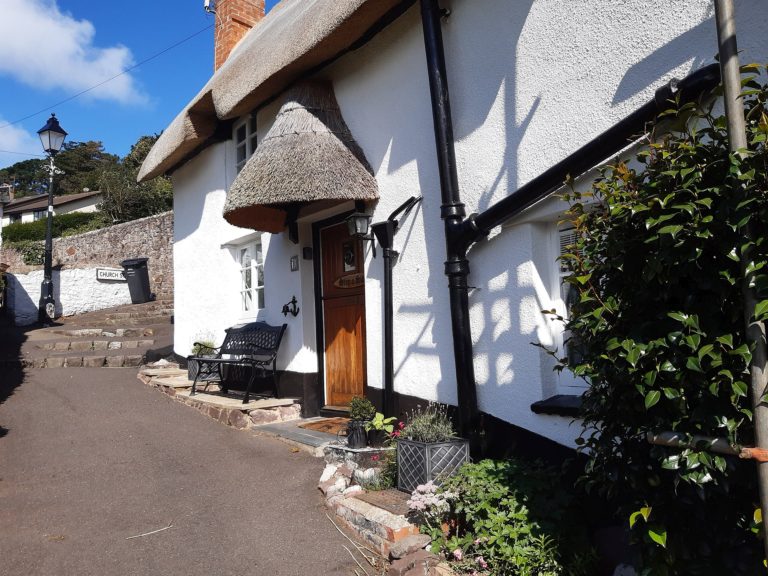Make Money From Your Skills and Knowledge as a Consultant (Part 1)
In this two-part article I’ll be looking at a method almost anyone can use to make money, by selling their skills and knowledge as a mentor, trainer or consultant.
I say almost anyone, because clearly you need some skills and knowledge other people would be willing to pay you for. There is a huge range of possibilities, however, and if you have worked in any skilled, professional or managerial position, you almost certainly have knowledge and abilities you could sell – possibly after some polishing up first!
You can offer your services to private individuals (I’ll look at this in a moment) but by far the biggest and most lucrative potential market is businesses (including public sector organizations such as the NHS). They have budgets for training and consultancy, and generally pay well if you can deliver the services their managers and employees require.
To give you a flavour, here are just a few areas for which mentors, trainers and consultants are much in demand…
- Health and Safety
- Equal Opportunities
- Marketing
- Business Law
- Salesmanship
- Accounts and Financial Management
- Planning
- Copywriting
- Computers
- Leadership
- Communication
- Graphic Design
- Social Media
One big advantage of working with businesses is that if all goes well, you are likely to be invited back in future, either to follow up your initial session or to train other staff. Also, one type of job can lead to another. For example, you might run a course for a client initially, and then be asked to provide ongoing mentoring or consultancy services.
Although businesses are your most likely clients, in some fields you could work with private individuals as well (or alternatively).
One example is computers. Many people struggle with mastering their home computers, and are willing to pay for help and instruction. If you can combine this with basic repairs and maintenance, you have the basis for a steady part-time or even full-time business. Admittedly it is unlikely to pay as well as working for business clients, but may suit some people better.
Business Basics
If you are going to offer any sort of training or consultancy service, even part-time, you will be regarded by the authorities as running a business. That means you will need to contact the tax authorities (HMRC in the UK) and let them know what you are doing.
You will also need to keep accurate financial records showing all money earned and any allowable expenses (stationery, advertising, phone bills, and so on). You or (more likely) your accountant will use these records in due course to produce annual accounts, which will determine how much tax you have to pay.
- My personal advice would be to speak to an accountant early on and get his/her advice on how best to keep your books (financial records). This can save you a lot of hassle – and expense – later.
I don’t have space here to go into detail about the nuts and bolts of setting up in business, but there are many books on this subject available. You might also want to take a part-time college course if any are on offer in your area.
As always, the internet is a great source of information as well. Startups and the government’s business website are two very useful resources, but there are plenty of others. Just enter “Starting your own business” in any search engine to find more.
Marketing Yourself
Marketing is the key to making money in this field, so in the remainder of this post I will concentrate on this subject.
Contrary to what is sometimes believed, marketing isn’t the same as advertising. It is an approach or even a philosophy for doing business.
The marketing method involves finding out what potential clients need, and then setting out to meet those needs. This is important, as what you believe potential clients need may not always correspond with the reality.
Advertising (trying to persuade potential clients you can meet their needs) is therefore one aspect of marketing, but it’s far from the whole story. The first stage of marketing is market research, so let’s start there…
Market Research
If you’re planning to set up as a freelance trainer/consultant, it’s important to spend some time researching your chosen field to discover what exactly potential buyers might be looking for.
This will help ensure you pitch your offer correctly, and may also uncover additional niches you want to target. So it is well worth spending a bit of time on your preliminary research rather than jumping straight in.
There are various ways of doing market research, many of which can be performed from your desk or a library. One is researching what other people working in this field – your potential competitors, in other words – are offering.
This is easy to do on the internet. Put yourself in the position of a would-be client and do the sort of search query you might expect them to use: “leadership training”, for example. That should bring up a range of websites belonging to training and consultancy providers. Spend some time studying what these folk are offering and how they promote themselves. You might also want to make a note of how much they charge, if this information is given.
It’s also good to research what potential clients actually want. This isn’t quite so easy, but one way is to look on job auction sites such as People Per Hour and Guru. Businesses use these sites to post details of services they require, which freelancers then bid on. Look for companies advertising for help in your chosen niche, and see how they describe their requirements and the sort of assistance they are seeking.
It is also well worth contacting at least a few potential clients directly. If you have friends or former colleagues in business, for example, tell them what you are planning to do and ask for any advice they can offer. Most will be delighted to help, and you will also be alerting them to the fact that before long you will be available for work in this field.
- Another method I have seen used successfully is to mailshot a range of potential clients with a market research questionnaire, and promise to make a donation to a specified charity for every one that is returned. This will obviously cost you a bit of money, but the information you get back will be valuable to you, and the contacts you make potentially even more so.
Through your market research you should be able to establish the type of client that may be the best fit for your skills, the services they need, and how best to present yourself to them as a potential provider.
Your Business Image
You are now almost ready to start promoting your services to potential clients, but one other thing you should give some thought to is your business image.
As a freelance mentor, trainer or consultant, it is vital that you present an impression of competence and professionalism. This applies even – or especially – if you are working from home.
Aside from obvious matters such as dress and appearance, you will need to ensure that this image precedes you in any advertising materials you produce. At the very least, you will need to have an attractive letterhead, and possibly a logo as well. If you want to keep your expenditure to a minimum, any printer will have someone who can do this sort of thing, but for the best possible results it’s best to engage a professional graphic designer.
The other thing necessary for anyone working in this field nowadays is a website. You can get a specialist website designer to create this for you, but if you have some computer skills it is quite possible to create a professional-looking site yourself, maybe using the popular WordPress platform. You could use the free WordPress.com service or (even better) set up your own self-hosted WordPress site using a service such as Bluehost (which I use – affiliate link). Either way, you’ll be able to choose from a wide range of themes and plugins to customize your site and ensure it presents your service in exactly the way you want.
When planning your website, you can take inspiration from sites created by other trainers and consultants, but there is nothing wrong with keeping it simple and straightforward at first. The main things you must have include information about yourself and your background, the services you offer, and any testimonials. Contact information is clearly essential, and if appropriate you might also include examples of your work (if your specialism is copywriting or graphic design, for example).
You could also put some information about pricing, although my advice would be to avoid giving chapter and verse about this. You don’t want to put people off if they think you are too expensive, or too cheap for that matter. In addition, it’s best to allow yourself some room for negotiation with individual clients.
With all this in place, you should be in a position to start contacting potential clients. I will discuss this in detail in my next post!
As ever, if you have any comments or questions about this post, please do leave them below..









